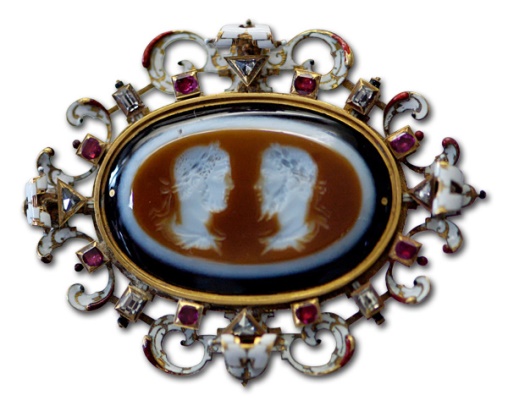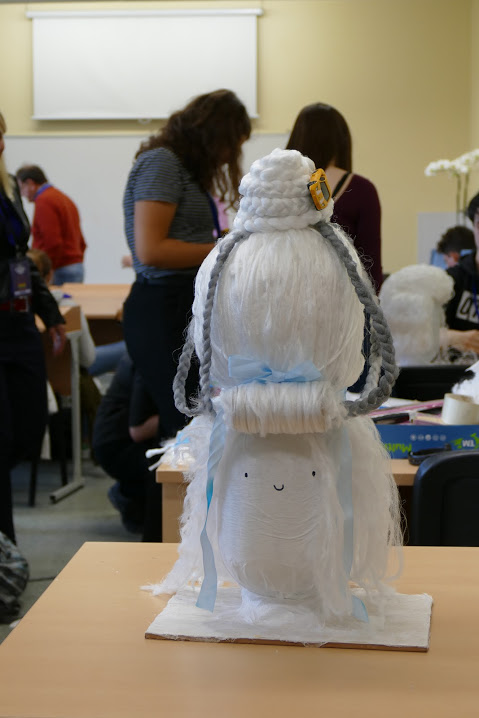Fashion
In contrast to Renaissance, Baroque fashion prioritized splendour and grandeur over
practicality and comfort. As any other Baroque monument, fashion was meant to
symbolize the greatness of God but also mundane joys. Precise outfit was a necessity both for women and men. Typical robe consisted of single pieces of various types of fabric clipped together. The novelty in fashion sphere were laces with asymmetrical floral patterns.
In the early age of 17th century, Baroque fashion was strongly influenced by the Thirty Years' War. Many features were taken from classic wartime wearing, especially the uniforms. Male members of nobility used to wear long coats with epaulets, made of silk, collars were plainer and decorated with lace. Shoes on heels had got replaced by high leather boots. Female corsets aimed to show off narrow waists (in Baroque, narrow waist was a typical symbol of beauty), skirts got a new appearance as the upper layers were being rearranged, so the petticoats were able to be seen.
In the second half of the 17th century, France took control of the fashion trends. Louis XIV became an inspiration for nobility all over the Europe. A dominant feature of late Baroque era were wigs, which later became an inseparable symbol of Baroque in general. Male outfit consisted of justaucorps - long coat with narrow waist and wide underpart, resembling skirt. The coat was casually worn with skinny pants and tights.
Female fashion was divided into two directions - French and English. Dresses were arranged with method of draping, enriched with a manteau - jacket with a trail - highlighting a triangular waist shape.

Exchange in Germany
Jewelry
Before the Baroque period, jewelry was made using colored enamel. However, as jewelers become more skilled in cutting gemstones, they started to produce necklaces, earrings that can be described as masterpieces.
Jewelry with engraved flowers also become quite popular. This was in part due to the fact that greater exploration of various countries was taking place at this time. Pearls were also very popular; however, many of the most wealthy men and women from this time period preferred to wear colorful gemstones instead. Louis XIV was one of the best known Baroque jewelry enthusiasts of this time.
The Victoria and Albert Museum in the UK houses some extraordinary jewelry from this time period. Some well known pieces include the Necklace with Sapphire Pendant and the Emperor Akbar Baroque Pearl Drop Pendant is yet another well known jewelry piece.
Hairstyles
Baroque is particularly associated with wigs. These, however, were worn especially by men. Women's long hair allowed for the creation of hairstyles that would gradually be two times higher than head.
Since about the 1680s up to the year 1713, 'fontage! was a normal part of a haircut. Originally being a simple ornament of pleated ribbons that gradually changes in a very complex structure consisting of several rows of lace covered with frames, the back of a long wide ribbon fell on the shoulders.
In the second half of the century, or in the 70s, respectively, from the simplicity of the refrain, buns and tresses grew in both volume and height, until it changed into the shape of a high cylinder.
Own hair ceased in such large masterpieces, although the fashion at that time commanded all the women to have their hair as long as they could. Complemented by hairpieces, it was later replaced with wigs (made not only from human hair but also of horsehair). Wigs were very expensive, their cost may equal the entire wardrobe. Most popular were wigs of white hair, colour wigs were less often.
Instructions on how you can make a Baroque wig
You will need:
Polystyrene ball
Coloured ribbons
Chemlon
Toilet paper towels
First, you have to create a high ore. It's simple but lengthy, but the result is worth it. Prepare your patience and start tossing chemlon on a polystyrene ball. Baroque ladies wore high buds and that is why the scrub is the most suffocating thing of the whole wig. Stick the bun with a glue gun. Get the surrounding hair under the bun so that you cut the threads of chemlon in half and stick it again.
You can make other wig accessories according to your imagination. You can get inspiration from what we did.
Dip threads of chemlon together but be careful that you have really long threads and, thus, the braids are long. Stick one end of fibers together and begin to plait classic braids. We used the most loose braids as a little bun over the bigger one. We're leaving other things on the wig to your imagination or you can inspire yourself in the pictures.













